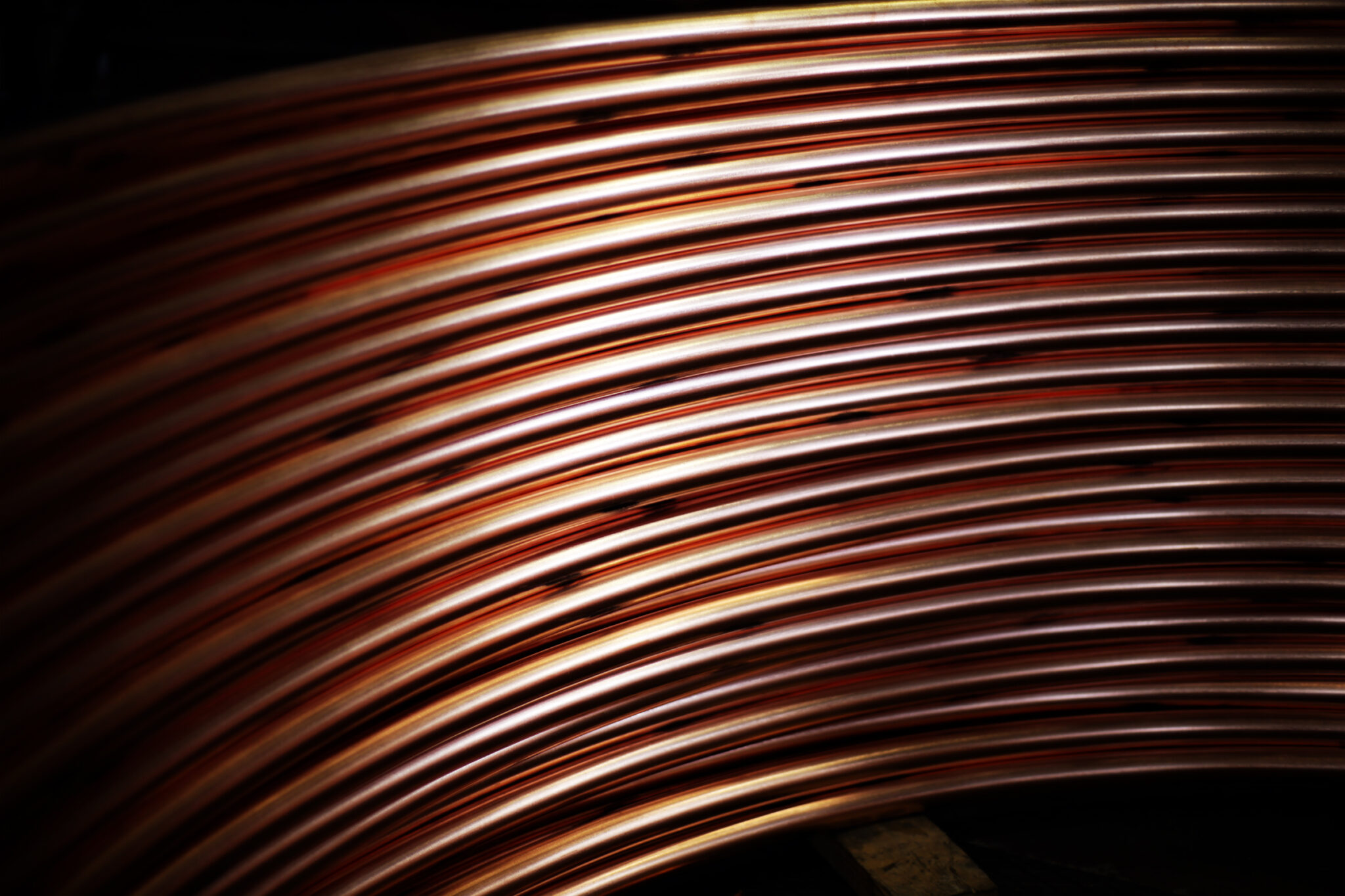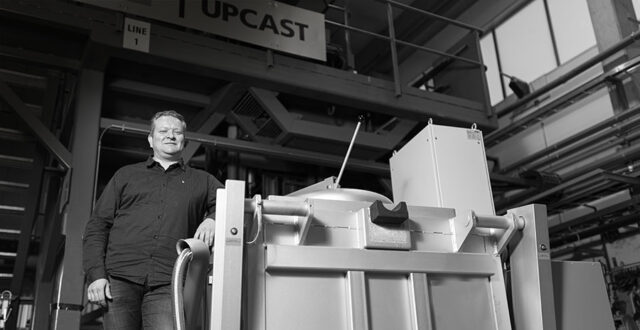UPCAST contributes to electric transportation deployment
The exponential increase in electric vehicles has also increased the demand for high-quality copper wire. A single fully electric car can contain up to 80 kilos of copper, in addition to which copper is used in the charging points. UPCAST OY has a solution for the global demand.
| TEXT: TOPI JOKINEN | PHOTOS: VIA RAMSTÉN, FOTO-FRIITALA KY, ISTOCKPHOTO AND UNSPLASH
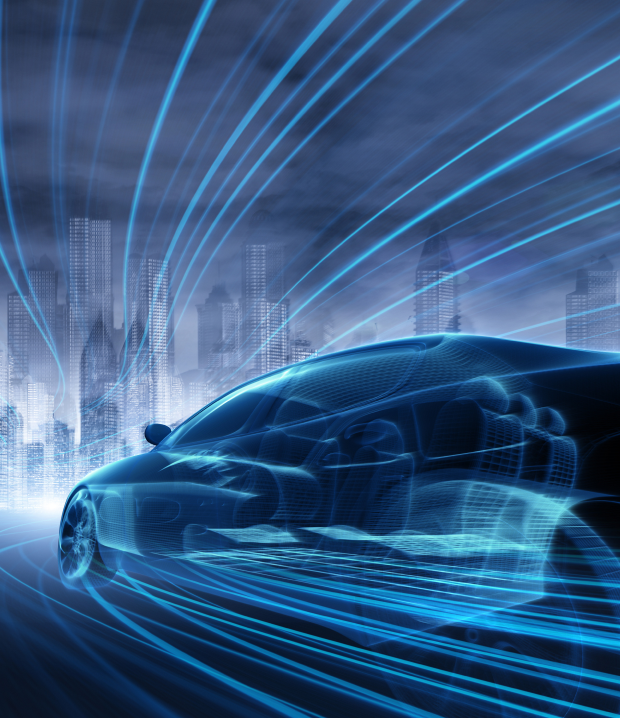
According to Senior Sales Manager Tuomas Rajaviita from UPCAST OY, electric vehicles and chargers require highly conductive copper wire that has no impurities.
–The electric car industry needs copper wire that is as high in quality as possible, and we can provide it, says Rajaviita.
He continues by explaining that the oxygen-free copper manufactured through the company’s upcast® technology has the exact features that the car industry is looking for, including the most needed hydrogen embrittlement resistance.
Numerous applications
Electric cars include several parts that use copper, in particular their batteries. Furthermore, copper is used in the vehicles’ power electronics and the electric motors’ coils.
– These cars feature high-torque motors of the same kind commonly used in industrial robots. Oxygen-free copper boasts outstanding welding properties, and the wire produced from it is highly suitable for the copper foils utilized in batteries, Rajaviita says.
However, the need for copper is not limited to the vehicle. Electric cars will not run without a charge, and high-conductivity copper is required for both the vehicles and the charging points.
The electric car industry needs copper wire that is as high in quality as possible.
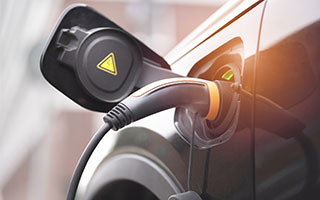
Efficient and environmentally friendly process
The UPCAST® lines supplied by UPCAST OY are providing increasing amounts of copper wire for the car manufacturing industry.
The production line capacity ranges typically from 6,000 to 30,000 metric tons per annum, and the majority of the recently supplied production lines have either medium or large-scale capacities of over 15,000 metric tons per year.
The environmental effects of electric cars have been debated at length, but at least the ecological burden from the manufacturing of copper components is minimal. Furthermore, the UPCAST® process itself produces very low amount of emissions, and copper is a superbly recyclable material.
– UPCAST® lines run on electricity, and at the same time they are highly energy efficient. When calculating the environmental effects of these lines, the method in which their power is generated must also be taken into account, Rajaviita concludes.
According to Tuomas Rajaviita, the oxygen-free copper manufactured through UPCAST OY’s technology has a high demand in the car industry.

What does the futurehold for electric cars?
How great will the electric car’s role be in the road transport of the future? We contacted Senior Scientist Marko Paakkinen from VTT Technical Research Centre of Finland and asked him this question.
Marko Paakkinen has an extensive background and current range of duties in research, but in short he is an electric transport specialist. He also has clear views about the electrification of transport – at least when it comes to private cars.
– Electrification will be the winning technology, in particular with cars, even though hydrogen technology is being developed too. However, this can all change through government policies, if hydrogen becomes subsidized, Paakkinen says.
He feels that the use of hydrogen should focus on aviation and maritime transport, where the use of electricity is more difficult. However, he sees few obstacles in utilizing electricity in heavy transport vehicles, although it does pose certain challenges.
– If a driver must take a 45-minute break every 4.5 hours, a 600–700 kilowatt battery can be recharged during these breaks by using a megawatt-level charging point. Currently, it seems likely that this will be possible by around 2025.
Should we follow Norway?
On a global scale, Norway has the largest proportion of electric vehicles of all cars. A fifth of the cars in the entire country run on electricity, and as many as 90 per cent of new cars are electric.
– Electric cars are not subject to vehicle tax or VAT in Norway, which makes them cheaper to buy. In addition to that, there are other, smaller incentives, such as lower parking fees and road tolls. However, this shift has been achieved through the government’s support, which makes it difficult for this model to be copied elsewhere, Paakkinen says.
Now, the government has begun to revoke some of the incentives, and there has also been talk of reapplying the vehicle tax. But despite this, the change has had an effect, for example on the air quality in Oslo, which has been improving, particularly from 2013 onward. (Source: Oslo Kommune)
Balancing cars and chargers
Paakkinen has been driving a fully electric car for eight years and uses an e-bike to commute. He sees no reason why the transport system could not be electrified.
– Reasonably priced family cars are sorely needed. Estimates indicate that the prices of electric motor and fuel engine cars will meet in 2027. However, the changing of people’s mental images and habits remains the greatest challenge.
According to Paakkinen, the key aspect of the electrification of transport is having an adequate number of charging points.
– Surprisingly, Finland is one of the countries that has twice the number of high charging points when compared to Norway. In fact, the best way to promote the use of electric cars is to invest in the infrastructure.
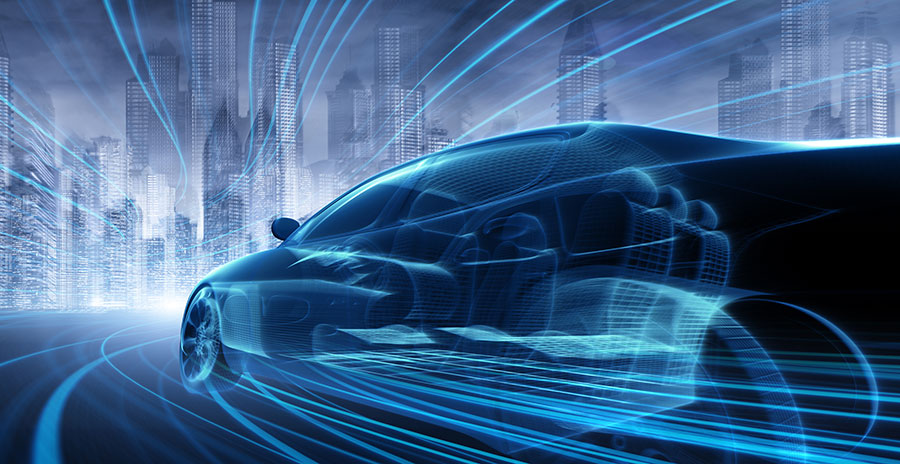
Electrification will be the winning technology, in particular with cars, even though hydrogen technology is being developed too.
